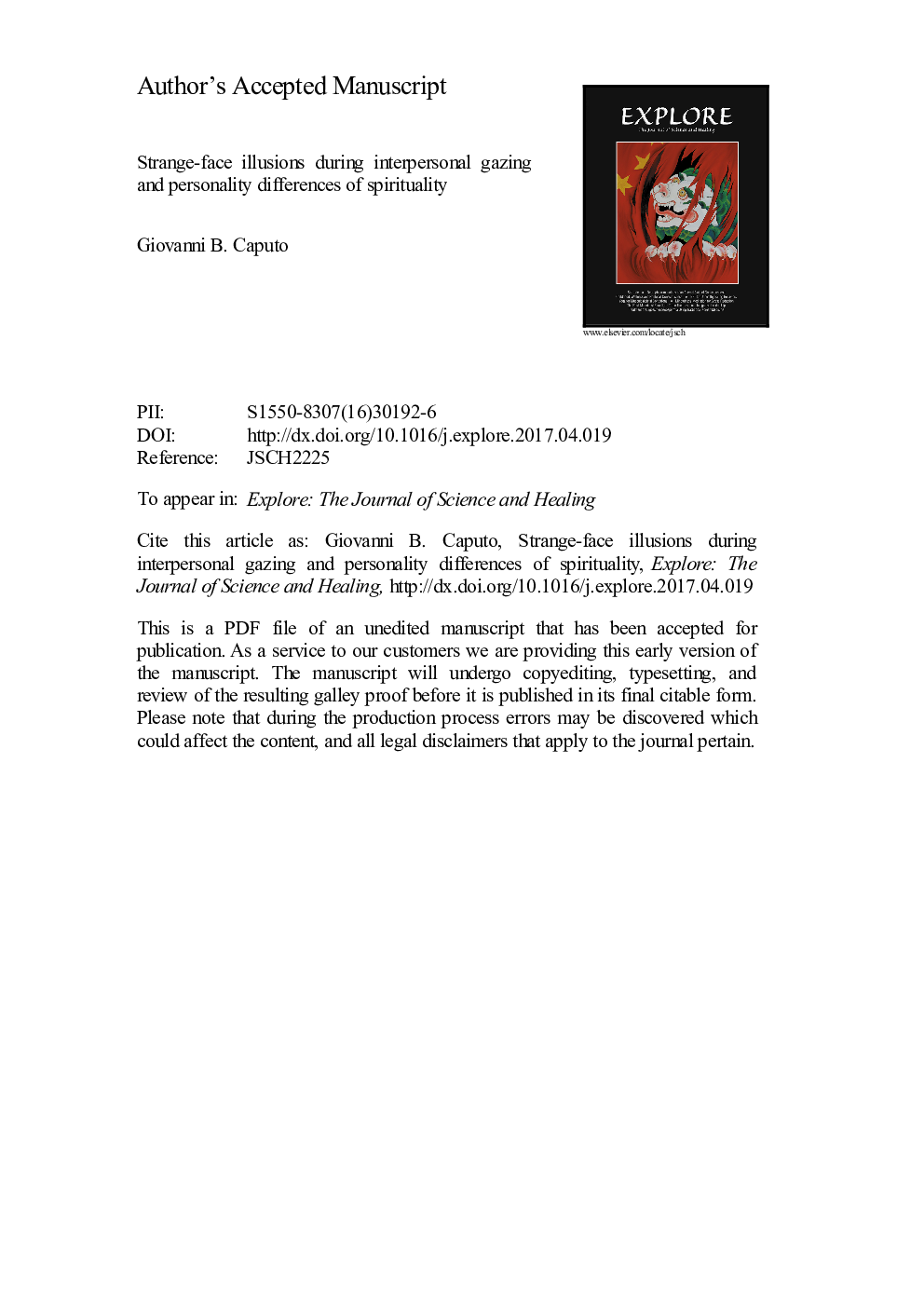| Article ID | Journal | Published Year | Pages | File Type |
|---|---|---|---|---|
| 8588565 | EXPLORE: The Journal of Science and Healing | 2017 | 14 Pages |
Abstract
Strange-face illusions are produced when two individuals gaze at each other in the eyes in low illumination for more than a few minutes. Usually, the members of the dyad perceive numinous apparitions, like the other's face deformations and perception of a stranger or a monster in place of the other, and feel a short lasting dissociation. In the present experiment, the influence of the spirituality personality trait on strength and number of strange-face illusions was investigated. Thirty participants were preliminarily tested for superstition (Paranormal Belief Scale, PBS) and spirituality (Spiritual Transcendence Scale, STS); then, they were randomly assigned to 15 dyads. Dyads performed the intersubjective gazing task for 10 minutes and, finally, strange-face illusions (measured through the Strange-Face Questionnaire, SFQ) were evaluated. The first finding was that SFQ was independent of PBS; hence, strange-face illusions during intersubjective gazing are authentically perceptual, hallucination-like phenomena, and not due to superstition. The second finding was that SFQ depended on the spiritual-universality scale of STS (a belief in the unitive nature of life; e.g., “there is a higher plane of consciousness or spirituality that binds all people”) and the two variables were negatively correlated. Thus, strange-face illusions, in particular monstrous apparitions, could potentially disrupt binding among human beings. Strange-face illusions can be considered as 'projections' of the subject's unconscious into the other's face. In conclusion, intersubjective gazing at low illumination can be a tool for conscious integration of unconscious 'shadows of the Self' in order to reach completeness of the Self.
Related Topics
Health Sciences
Medicine and Dentistry
Complementary and Alternative Medicine
Authors
Giovanni B. PhD,
